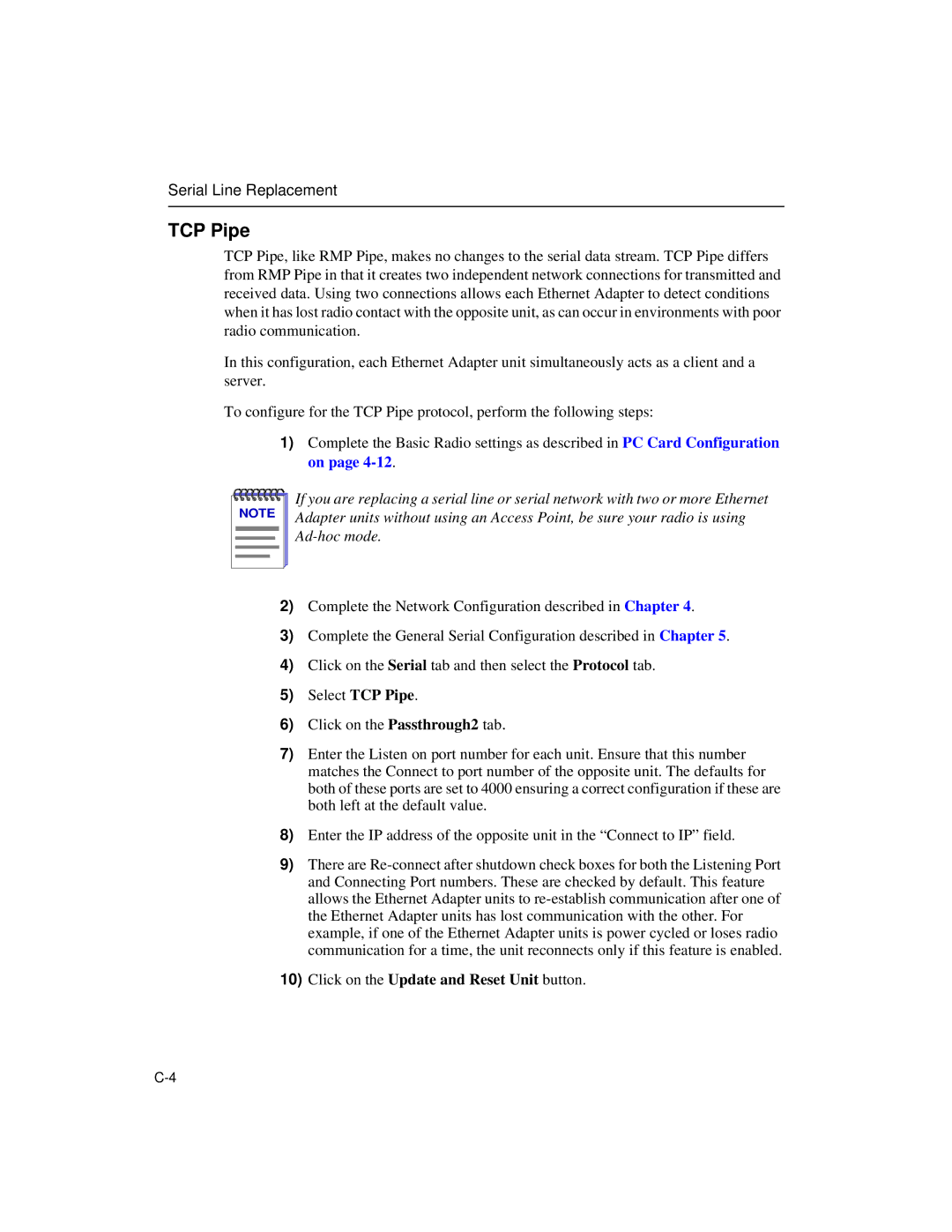
Serial Line Replacement
TCP Pipe
TCP Pipe, like RMP Pipe, makes no changes to the serial data stream. TCP Pipe differs from RMP Pipe in that it creates two independent network connections for transmitted and received data. Using two connections allows each Ethernet Adapter to detect conditions when it has lost radio contact with the opposite unit, as can occur in environments with poor radio communication.
In this configuration, each Ethernet Adapter unit simultaneously acts as a client and a server.
To configure for the TCP Pipe protocol, perform the following steps:
1)Complete the Basic Radio settings as described in PC Card Configuration on page
NOTE |
If you are replacing a serial line or serial network with two or more Ethernet Adapter units without using an Access Point, be sure your radio is using
2)Complete the Network Configuration described in Chapter 4.
3)Complete the General Serial Configuration described in Chapter 5.
4)Click on the Serial tab and then select the Protocol tab.
5)Select TCP Pipe.
6)Click on the Passthrough2 tab.
7)Enter the Listen on port number for each unit. Ensure that this number matches the Connect to port number of the opposite unit. The defaults for both of these ports are set to 4000 ensuring a correct configuration if these are both left at the default value.
8)Enter the IP address of the opposite unit in the “Connect to IP” field.
9)There are
